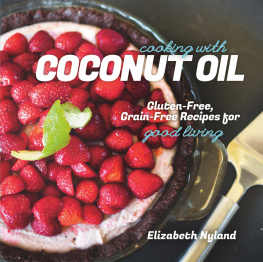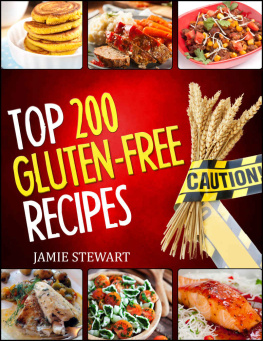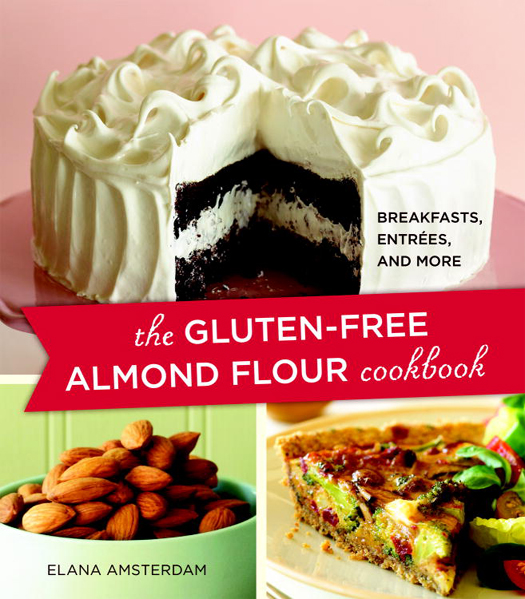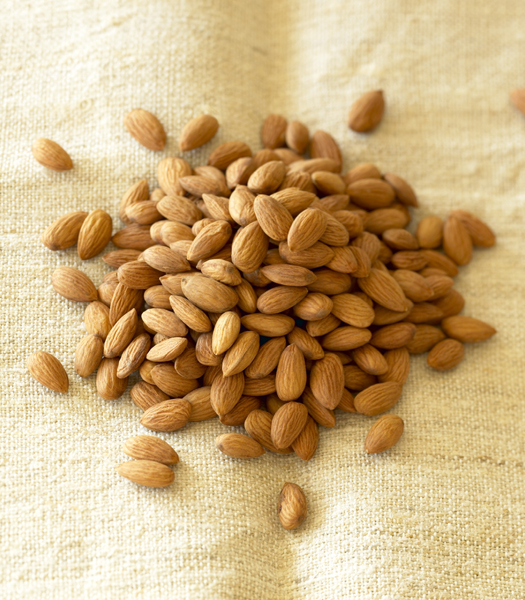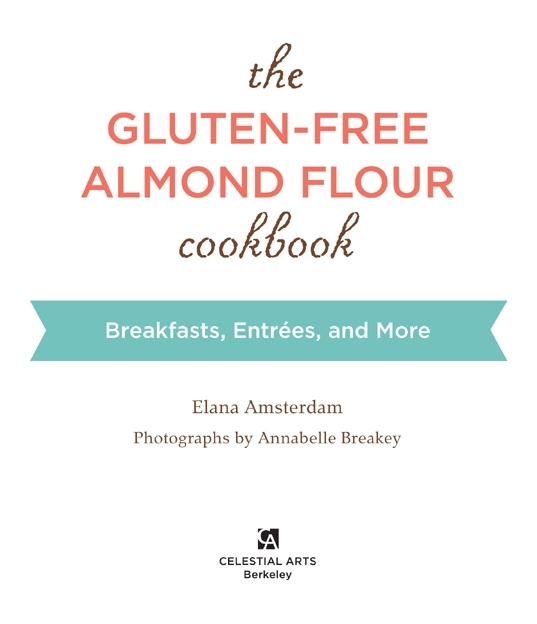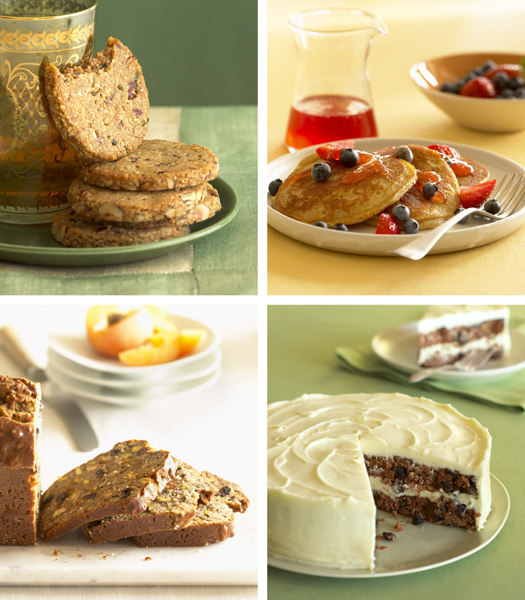Copyright 2009 by Elana Amsterdam
Photographs copyright 2009 by Annabelle Breakey
All rights reserved.
Published in the United States by Celestial Arts, an imprint of the Crown Publishing Group, a division of Random House, Inc., New York.
www.crownpublishing.com
www.tenspeed.com
Celestial Arts and the Celestial Arts colophon are registered trademarks of Random House, Inc.
Library of Congress Cataloging-in-Publication Data
Amsterdam, Elana.
The gluten-free almond flour cookbook / Elana Amsterdam ; photographs by Annabelle Breakey.
p. cm.
Includes index.
Summary: A collection of 99 gluten-free, quick-and-healthy whole foods recipes using almond flourProvided by publisher.
ISBN 978-1-58761-345-6
1. Gluten-free dietRecipes. 2. Cookery (Almonds) I. Title.
RM237.86.A47 2009
641.5638dc22
2008055172
eISBN: 978-1-60774-540-2
Cover design by Betsy Stromberg
Food styling by Dan Becker
Prop styling by Emma Star Jensen
Food stylist assistant: Lena Hung
v3.1
Dedication
For Rob, an honest critic, amazing friend, and fantastic partner; J, for sharing your exquisitely discerning palate and truthfulness; and E, for knowing how to mix the wet into the dry.
Contents
Acknowledgments
S o many thanks go to so many people for their help in putting together this cookbook. First, Rob, thanks for your patience, endless taste testing, and only spitting out samples that had ginger in them. To Helen, for hanging out in the kitchen with me for the past twenty-five years. To Marylyn, for the endless conversations, dreaming, and inspiration. To Alison Schwartz at ICM, for taking the leap and being there every step of the way. To Lucy Rosset, for encouragement and caring during challenging times. And finally, to Elaine Gottschall, for introducing me to the world of almond flour.
Introduction
I ve always loved to cook. As a girl, I baked cookies almost every day after schoolby the time I was twelve, I had the Tollhouse recipe committed to memory. In high school, I created my own chocolate chip cookie recipe and sold the treats locally.
In my midtwenties, I spent my waking hours at a full-time job in environmental consulting and taught yoga on the side. Part of my yoga teacher training included the study of Ayurvedic nutrition. My lifelong interest in cookingalbeit not exactly wholesome up to that pointcombined with my passion for ecological matters resulted in my thorough investigation of nutrition and alternative living, which changed the course of my life.
At age thirty, my interest in healthy eating and holistic living proved pivotal when I was diagnosed with celiac disease, an autoimmune disorder that causes damage to the small intestine, which can lead to the malabsorption of nutrients. This genetic intolerance to gluten, a protein found in wheat, rye, and barley, triggers a destructive reaction of the immune system. Celiac, which often goes undiagnosed, is considered a multiorgan system disease.
This diagnosis led me on a personal culinary journey to develop delicious, nourishing, gluten-free foods for everyone in my home. I had no interest in creating separate meal plans for various family members. My intention was to make one meal that would meet my dietary restrictions without compromising taste for family and friends.
As I explored the gluten-free world, I was disappointed. I could not get accustomed to the dry, odd-flavored baked goods and strange, gritty textures. I wouldnt compromise taste just because I had celiac disease. In addition, I found that much of the (overly sweetened) high-glycemic, gluten-free foods played with my blood sugar in an alarming way. For me, mood swings and high-carb hangovers were unacceptable side effects of a gluten-free diet.
Luckily, I stumbled upon an enlightened group of gluten-free people on the Internet; these people introduced me to almond flour, which I quickly saw had great potential for creating classic recipes that were gluten-free, high in protein, and lower in sugar and carbohydrates.
After three years of tasting and testingon classes of schoolchildren (trust me, they wont lieif the food isnt good, theyll just spit it out), friends, family, and complete strangersI began to feel encouraged in my mission to turn gluten-free food into delicious mainstream fare.
It wasnt long before parents stopped me in the parking lot with recipe requests. I mailed recipes to friends and family across the country. And the best part was that most of these people didnt have food restrictions.
Soon I had the problems that every recipe writer wants: moms calling me to bake their childrens birthday cakes, friends and acquaintances asking for cooking classes, teachers requesting my recipes for school parties. In response, I launched a blog in 2006 (www.elanaspantry.com) to share my recipes, health tips, and overall love affair with food with a broader audience.
Almond flour has been the perfect vehicle in my journey to unite people around good food. It is a simple ingredienteasy to use, with elegant results and excellent nutrition. I hope you enjoy making these recipes as much as I have enjoyed creating them! I offer the fruits of my labor with love and gratitude to friends, family, and readers.
Using Almond Flour
I n European countries where wheat and corn dont dominate agriculture, vibrant, centuries-old traditions make delicious use of almond flour in dishes such as marzipan, macaroons, and tortes. These cultures discovered the secret of almond flour long ago: it tastes delicious, its easy to use, and its a superfood.
TASTE
Almond flour tastes sweet, rich, and buttery, making it somewhat indistinguishable from wheat flour in baked goods and other dishes.
As opposed to the dry, gritty texture of rice flour and other gluten-free flours in baked goods, almond flour is smooth and has excellent mouth feel.
EASE OF USE
Almond flour is as easy to use as wheat flour and much less tedious than complex gluten-free flours, which require numerous supplemental ingredients such as xanthum gum, cornstarch, and potato flakes for binding purposes. Because it requires numerous additional ingredients, gluten-free baking has traditionally been known as a painstaking, time-consuming task. This is not the case with almond flour baking, which is actually even quicker and easier than most traditional wheat-based recipes that require yeast and rising time.
SUPERFOOD
Almond flour is a highly nutritious superfood that is low-carb and rich in vitamins, minerals, and good fats. Almond flour is not only the healthiest flour around, it is also higher in protein and far richer in nutrients than wheat flour and its gluten-free counterparts; a serving of almond flour is packed with protein and fiber.
Comparison of Nutritional Values: Almond Flour versus Other Flours
Nutrition Info (100 g): Almond Flour
Protein: 21.94 g
Carbohydrates: 19.44 g
Glycemic Index: < 1
Fiber: 10.4 g
Nutrition Info (100 g): White Wheat Flour






